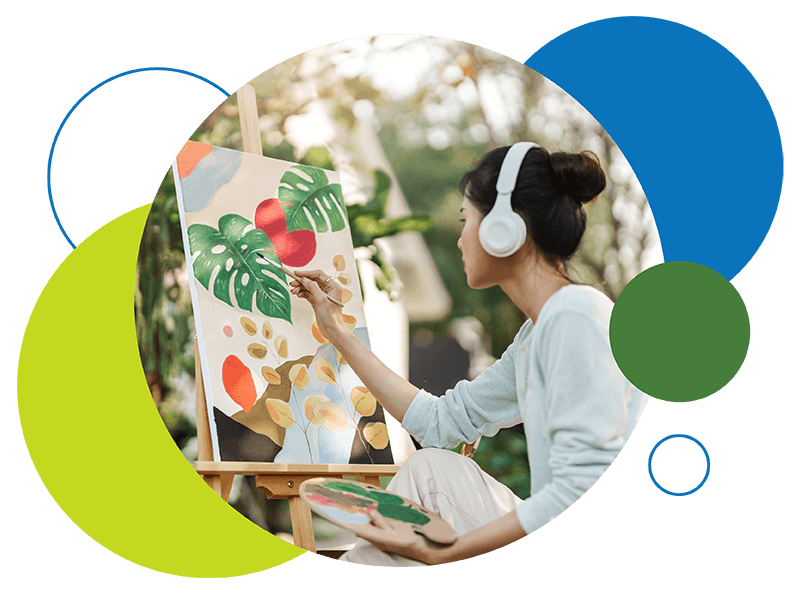Art Therapy, San Diego
Expressive Arts Therapy, or EAT, utilizes multiple modalities for creative change and healing for adults and children.

The Power of Art
Art has been around for longer than psychology has, yet the two disciplines are unmistakably interconnected. There’s no denying that art facilitates a safe and nurturing environment that allows us to express ourselves and to interpret our feelings without judgement. When channeled appropriately, art has the power to create insight and positive change for many of our mental health challenges—expressive art therapy hinges on this premise.
What Is Expressive Arts Therapy?
Expressive arts therapy is a field of mental health that uses the creative process to help individuals and communities to heal physically, mentally, and emotionally. This is done through very simple means of artistic expression like lines, colors, shapes, sounds, and movement.
Applying personal meaning and symbolism to these forms of expression helps people to come to terms with the hardships and trauma that they face in their lifetime. It provides a safe means of inwardly interpreting the thoughts and feelings that might not come to the surface easily in other disciplines of therapy.
With the gentle foundation of a caring and trusting therapeutic relationship, your expressive arts therapist supports you to connect with your innate creativity through drawing, painting, sculpting, collaging, moving, singing, and writing.
To benefit from this form of therapy, you don’t have to be an expert artist; any level of art experience is welcome as you’ll be gently guided through the creative process for personal reflection, self-expression, coping, self-care, and healing.
The Process
Expressive Art Therapy goes one step beyond traditional talk therapy by acknowledging that each individual’s healing process is unique to their own psyche.
Each form of expression is unique and will be carefully selected to suit the patient. Finger painting may be used for children as a fun and low skill activity that helps them open up to their therapist, a more mature patient can turn to journaling or writing as a way to communicate their feelings, and someone who has a deep connection to their therapist could use movement or dancing instead.
- Painting
- Dance / Movement
- Music
- Drama / Theatre
- Writing / Poetry / Journaling
- Sculpting
Clients in therapy are encouraged to create art that expresses their inner world rather than their rendition of the outer world. That’s what separates EAT from an art tutorial—the latter is focused on teaching techniques and creating a finished product, whereas art therapy is more about focusing on the inner experience.
The therapist won’t give precise instructions, instead letting the patients direct their work around cues such as “paint something valuable to you.” It’s not just the finished work that offers insights into the patient’s mentality, but the entire process. The rate of work, colors used, and type of lines drawn can be just as meaningful.
This inner experience highlights thought patterns and opens up pathways to bottled-up emotions that some patients would otherwise hesitate to talk about in traditional therapy.
Developmental Benefits of EAT for Children
Communication and therapy are inseparable — the effectiveness with which clients communicate with their therapists dictates the outcome and quality of the treatment.
While most adults can communicate effectively with their therapists, children can’t always express themselves as effectively for the following reasons:
- Lack of vocabulary and linguistic skills
- Being shy and socially anxious
- Difficulty identifying or labeling emotions
- Fear of judgment or misunderstanding
- Negative experiences with verbal expression